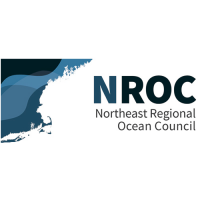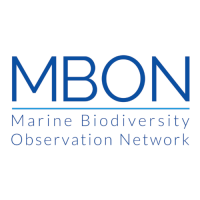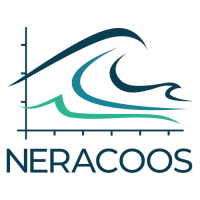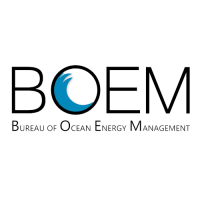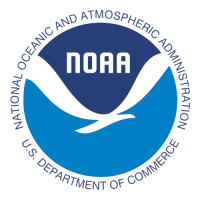MBON

The Marine Biodiversity Observation Network (MBON)
“The Marine Biodiversity Observing Network (MBON) is a growing international collaboration to observe change in marine communities and ecosystems, understand how these changes affect ecosystem function and provide products and information that contribute to only to sustainability of marine ecosystem services but also solutions for conservation of iconic marine species in danger of extinction.”
The ISMN's Role in MBON
(Preliminary datasets from the ISMN MBON project are publicly available on the Data page)
Funded partners for the ISMN’s MBON project
The U.S. MBON comprises projects in six locations around the U.S. coastline. The Northeastern Regional Association of Coastal Ocean Observing Systems (NERACOOS), through the ISMN, administers the MBON project for the Gulf of Maine ecosystem. For this effort we are working to understand long-term change in the Gulf of Maine marine ecosystem with a focus on plankton biodiversity.
MBON in the Gulf of Maine
The pelagic food web in the Gulf of Maine (Figure) is characteristic of the food web functioning in subarctic waters stretching across the North Atlantic from the Gulf of Maine to the Barents Sea off of northern Norway. A critical component to the success of this food web is the copepod Calanus finmarchicus, a planktonic species that is well adapted to subarctic conditions. C. finmarchicus feeds on lipid rich phytoplankton and stores these lipids in its body to use as an energy source during fall and winter when food is in short supply. This one species has historically been remarkably dominant as a food source for planktivorous fish, like herring and sand lance, that support many of the important fisheries, marine mammals and seabirds in the Gulf of Maine. C. finmarchicus is also the primary food source for the endangered North Atlantic right whale, whose summer foraging habitat is determined by where this copepod species can be found in abundance. The abundance of C. finmarchicus has been on a decline in the past decade, related to increasing Gulf of Maine temperatures and shifts in currents supplying the Gulf of Maine, from rich sources originating in Canadian waters to warmer and saltier Calanus poor waters originating from the sea separating the Gulf of Maine from the Gulf Stream. C. finmarchicus is therefore a “canary in the coal mine” sentinel indicator of ecosystem change in the region.
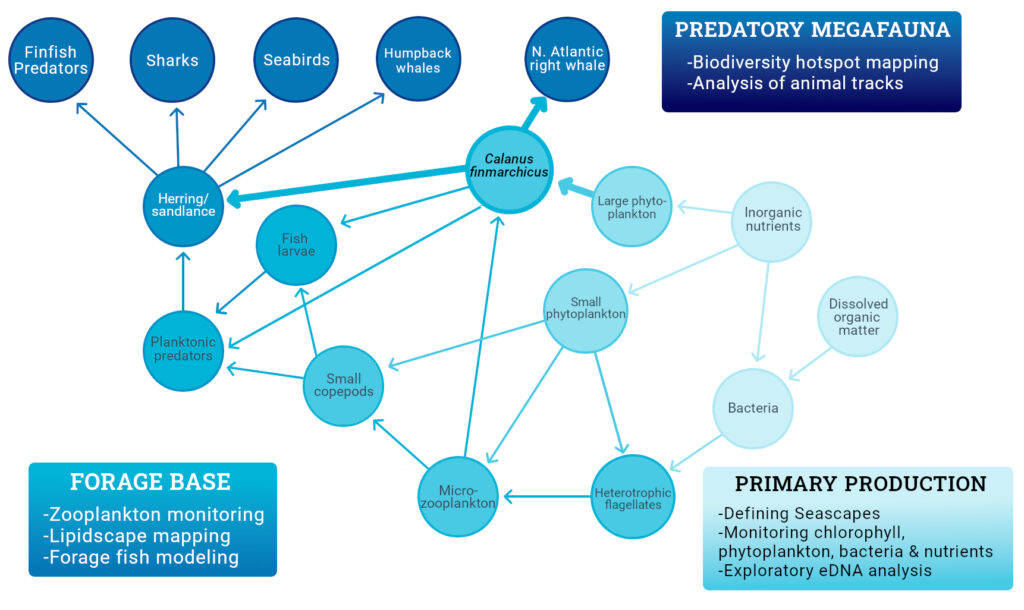
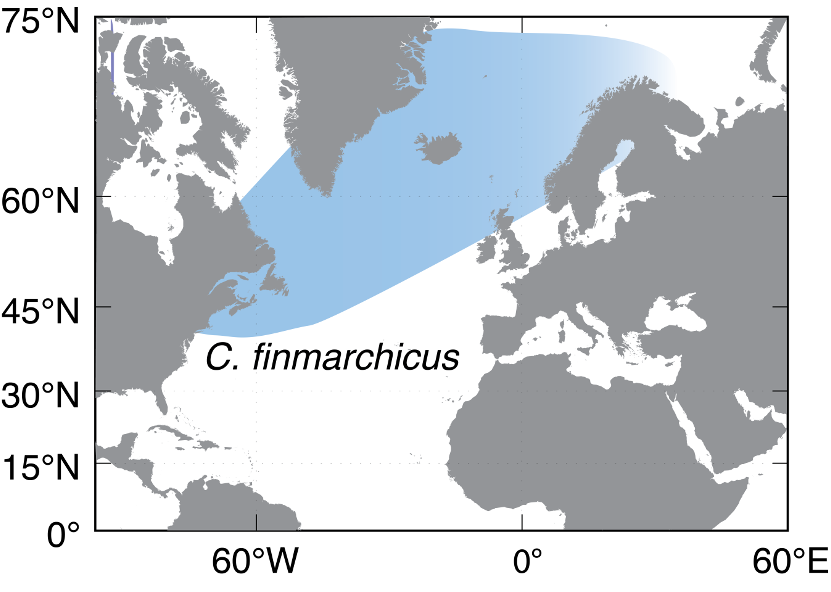
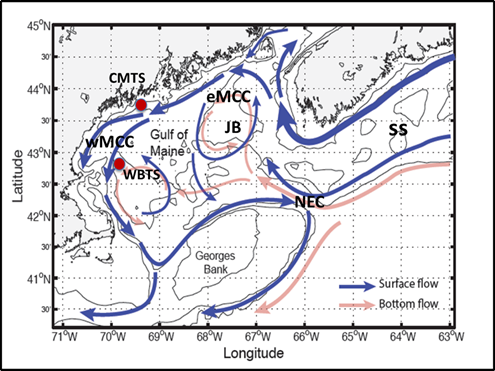
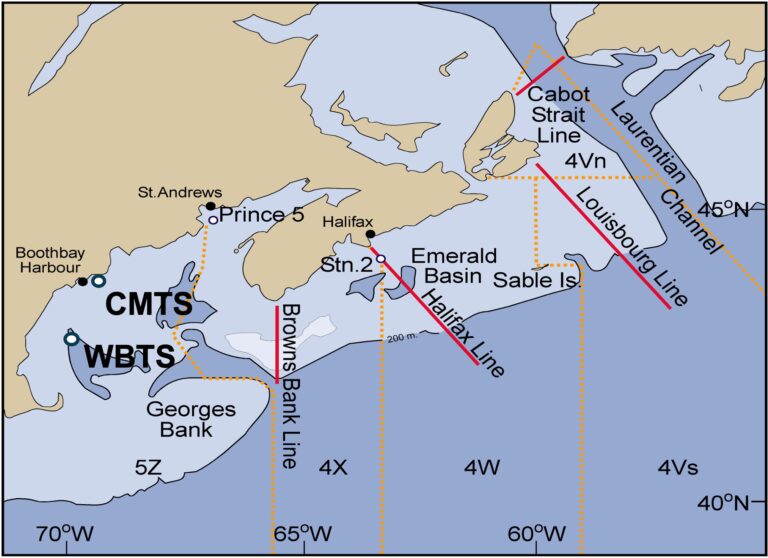
ISMN-MBON observes C. finmarchicus abundance and overall plankton biodiversity at two time series stations: Wilkinson Basin (WBTS) and Central Maine (CMTS). The methods used to sample are compatible with those of the Atlantic Zone Monitoring Program (AZMP) run by the Department of Fisheries and Oceans Canada, which has been collecting data from several sites as far back as 1999. Historically, sampling has occurred at WBTS and CBTS since 2004 and 2008 respectively, though not always continuously. The similarity between the MBON sampling protocol and AZMP protocol means that MBON data can be used to fill AZMP gaps, and the AZMP time series can lend context to the MBON efforts.
The ISMN-MBON Calanus Index in Wilkinson Basin, the primary overwintering habitat of C. finmarchicus in the western Gulf of Maine. Abundance of energy-rich Calanus stages is shown on a log scale. Blue points show ISMN-MBON time series data between 2008-2017. Red points show Calanus abundances in 2020 and 2021, and green points include initial 2022 data. Gray points and solid and dashed lines show NOAA survey data (mean abundance and twice and one-half of mean) in Wilkinson Basin collected since 1977.
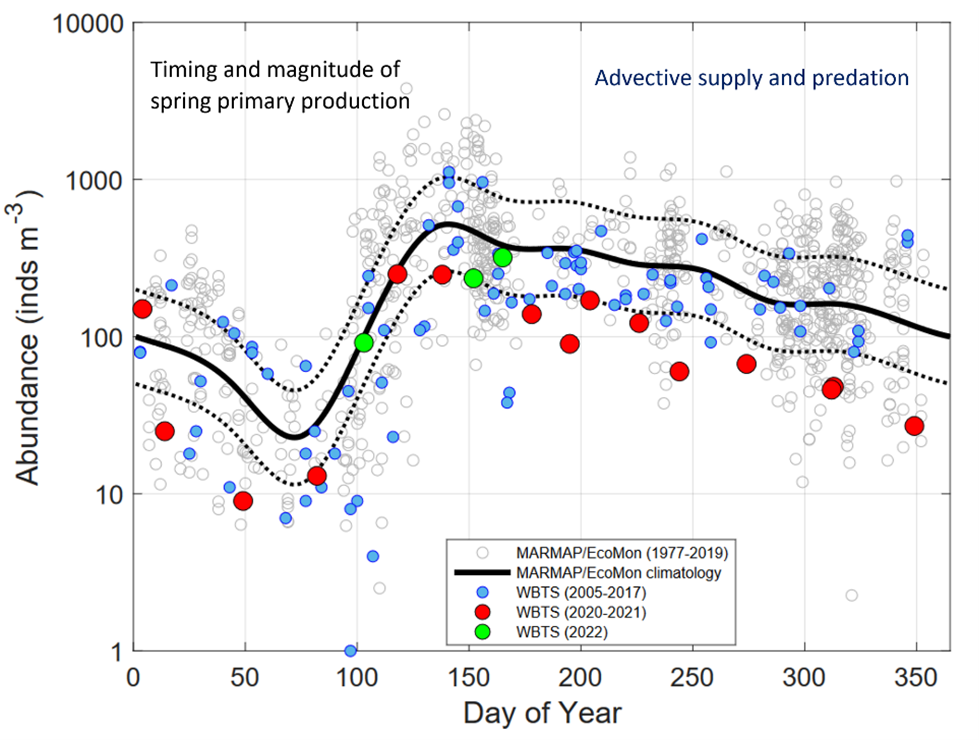
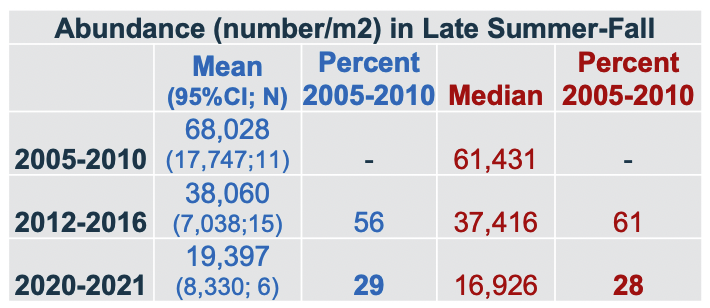
Analysis of 2020-2021 data show that lipid-rich Calanus (stages CIII-CVI) abundance in late summer/fall has fallen to approximately 30% of the mean over the past 10-15 years. These data are consistent (see Ji et al. 2021) with results from the broad-scale NOAA plankton surveys that are carried out several times each year.

